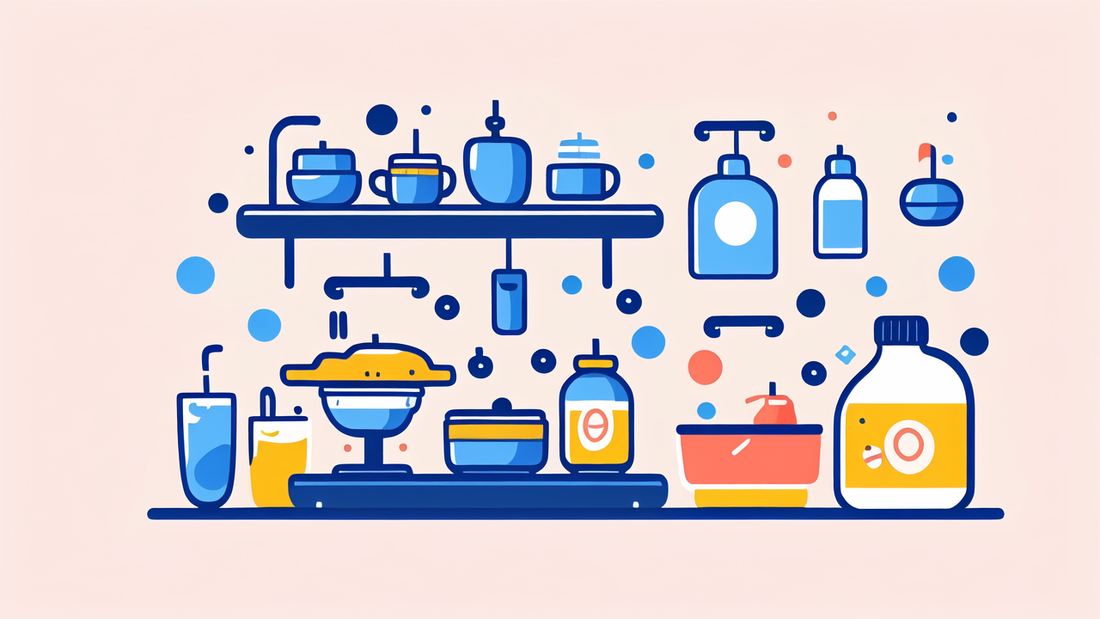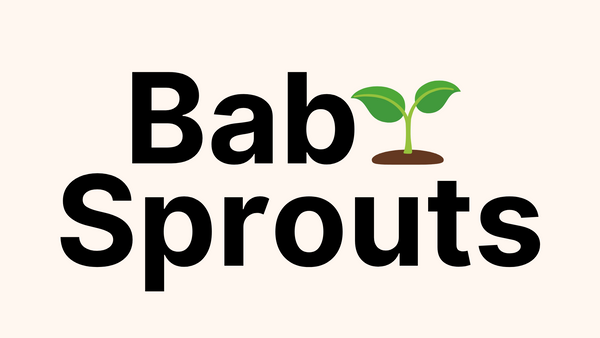
Creating a Safe and Fun Baby's Kitchen: Must-Have Tools
Understanding the Basics of a Baby's Kitchen
The Importance of a Safe Environment for Babies
Creating a safe space for your baby is crucial. In the kitchen, safety is key. Babies are curious and love to explore.

They touch, taste, and grab everything they can reach. A safe kitchen lets them learn without harm.
It's vital to childproof the area. Remove sharp objects and harmful chemicals. Keep them out of reach. Use cabinet locks
to prevent access to dangerous items. Cover electrical outlets with safety plugs.
A safe kitchen reduces stress for parents too. You can relax knowing your baby can't get into trouble. It allows for
quality time together without constant worry. A safe kitchen is the foundation for fun learning experiences.
Essential Items Every Baby's Kitchen Must Have
Every baby's kitchen needs some key items. These tools make feeding time easier and more enjoyable.
- High chair: A sturdy, easy-to-clean high chair is a must.
- Bibs: Look for waterproof bibs to keep clothes clean.
- Sippy cups: Choose spill-proof cups for less mess.
- Plastic plates and bowls: Opt for unbreakable, BPA-free options.
- Soft spoons: Get spoons with rubber tips for sensitive gums.
- Food storage containers: These are great for homemade baby food.
- Bottle warmer: This makes night feedings easier.
- Bottle sterilizer: Keeps bottles clean and germ-free.
- Baby food maker: Ideal for making fresh, healthy meals.
- Splat mat: Protects your floor from spills and messes.
These items create a functional space for feeding and playing. They make mealtime smoother for both baby and parent.
Top Tools for a Baby's Kitchen
Toys and Educational Materials
Toys and learning tools are vital in a baby's kitchen. They keep little ones engaged while you cook or clean. Choose

items that are safe and age-appropriate.
Soft books about food are great. They teach about different fruits and veggies. Plastic play food sets are fun too.
Babies can pretend to cook and serve meals.
Stacking cups are perfect for the kitchen. They teach size and balance. Plus, they're easy to clean. Shape sorters with
food themes are educational and fun.
Music toys add joy to the kitchen. Look for ones with food-related songs. They make waiting for meals more entertaining.
Remember, rotate toys to keep things fresh. This helps maintain your baby's interest. Always check toys for small parts
or choking hazards before use.
Kitchen Utensils for Babies
Baby-friendly kitchen tools are essential. They help little ones feel involved in meal prep. Choose items that are safe
and easy to handle.
Plastic measuring cups and spoons are great. Babies can play with them while you cook. Soft silicone whisks are fun to
hold and shake.
Look for small rolling pins made for tiny hands. They're perfect for play dough activities. Plastic cookie cutters in
fun shapes are also engaging.
Toy pots and pans let babies mimic cooking. Get ones that make gentle sounds when tapped. This encourages musical play.
Remember, all utensils should be BPA-free and easy to clean. Avoid anything with sharp edges or small parts. Safety
always comes first in a baby's kitchen.
Safety Equipment and Gadgets
Safety gear is crucial in a baby's kitchen. It protects little ones from harm. Here are some must-have safety items:
- Cabinet locks: Keep dangerous items out of reach.
- Stove knob covers: Prevent accidental burns.
- Corner guards: Protect babies from sharp table edges.
- Non-slip mats: Use under high chairs to prevent sliding.
- Fridge locks: Stop curious hands from opening the fridge.
- Drawer latches: Keep utensils safely stored away.
- Appliance locks: Secure dishwashers and ovens.
- Window guards: Prevent falls from open windows.
- Outlet covers: Block access to electrical sockets.
- Safety gates: Keep babies out of the kitchen when needed.
These tools create a safer environment. They give parents peace of mind. Always supervise babies in the kitchen, even
with safety gear in place.
Setting Up Your Baby's Kitchen: Tips and Tricks
How to Choose the Right Toys and Gadgets
Picking the right toys and gadgets is key. Consider your baby's age and skills. Look for items that are safe and

stimulating.
Choose toys that are easy to clean. Kitchens can get messy. Opt for washable materials. Avoid toys with small parts that
can be swallowed.
Look for multi-purpose items. A high chair that converts to a booster seat is practical. It grows with your child.
Stackable storage containers save space and can be used as toys.
Read reviews from other parents. They offer real-world insights. Check for product recalls before buying. Safety should
always be your top priority.
Remember, simple is often best. Babies don't need complex gadgets. A set of measuring cups can provide hours of fun.
Focus on items that encourage exploration and learning.
Organizing Your Baby's Kitchen for Maximum Fun and Safety
A well-organized baby kitchen is both fun and safe. Start by designating specific areas. Have a feeding zone, play area,
and storage space.
Keep frequently used items within easy reach. Store less-used things higher up. Use clear containers to see what's
inside easily. Label everything for quick identification.
Create a low shelf for baby-safe items. This lets your little one explore safely. Use drawer dividers to keep small
items tidy. Install a pegboard for hanging bibs and light utensils.
Make sure the play area is visible from the cooking space. This allows you to supervise while preparing meals. Use
colorful mats to define the play zone. It makes the space inviting and easy to clean.
Remember to keep cleaning supplies out of reach. Store them in a locked cabinet. Keep a first-aid kit handy, just in
case. A clean, organized kitchen is a happy, safe kitchen.
Regular Maintenance and Updates for Your Baby's Kitchen
Keeping your baby's kitchen in top shape is ongoing. Regular checks and updates are important. They ensure the space
stays safe and fun.
Inspect toys and tools weekly. Look for wear and tear. Replace items that are broken or damaged. Clean all surfaces
daily. Use safe, non-toxic cleaners.
Check safety equipment monthly. Make sure locks and latches work well. Replace batteries in electronic safety devices.
Update your first-aid kit regularly.
As your baby grows, reassess the kitchen setup. Remove outgrown items. Add new, age-appropriate toys and tools. Adjust
shelf heights to match your child's reach.
Stay informed about product recalls. Sign up for safety alerts from consumer agencies. Replace recalled items promptly.
Your baby's safety is always the top priority.
Remember, a well-maintained kitchen is a happy kitchen. Regular care keeps it safe and inviting for your little one.
